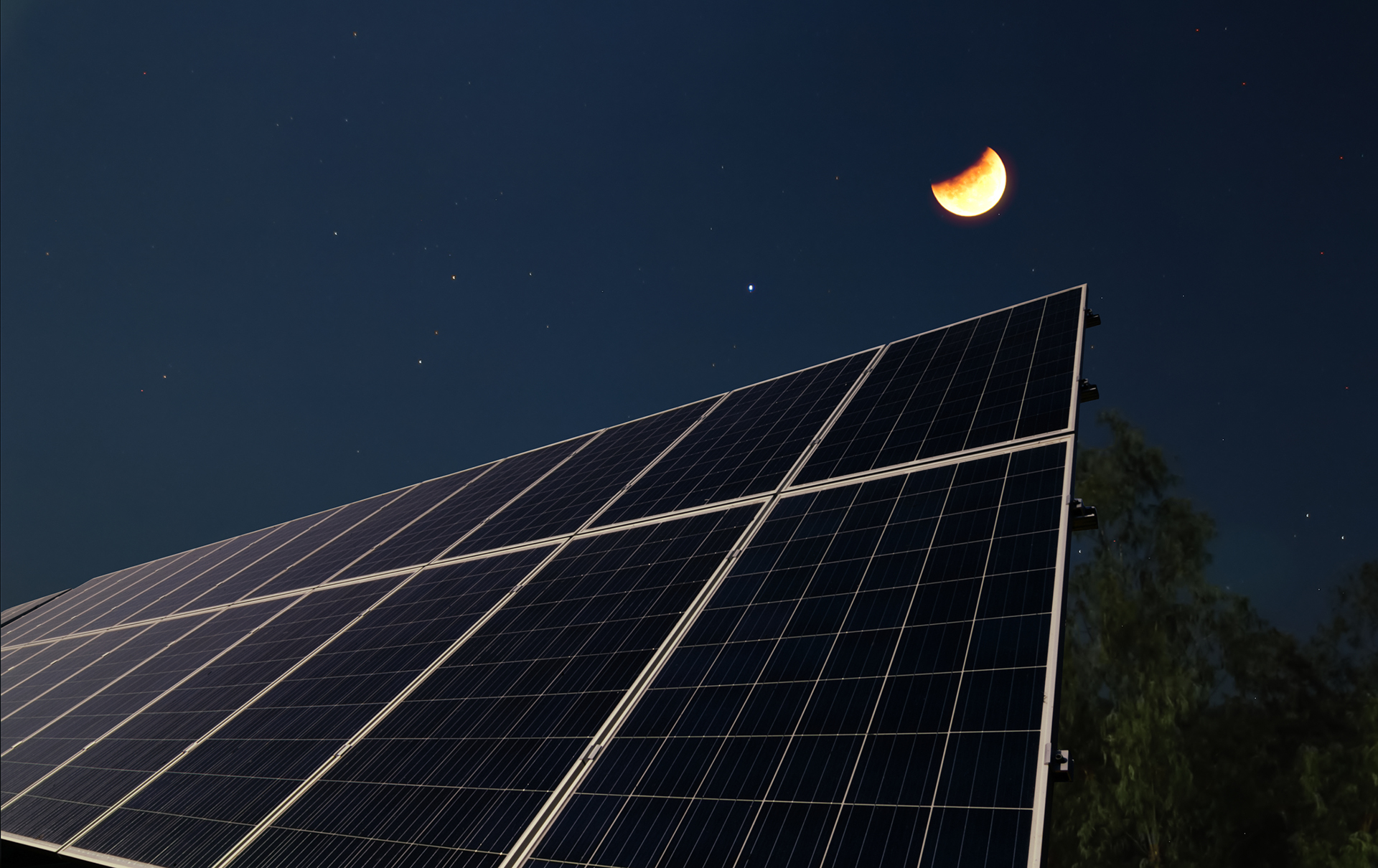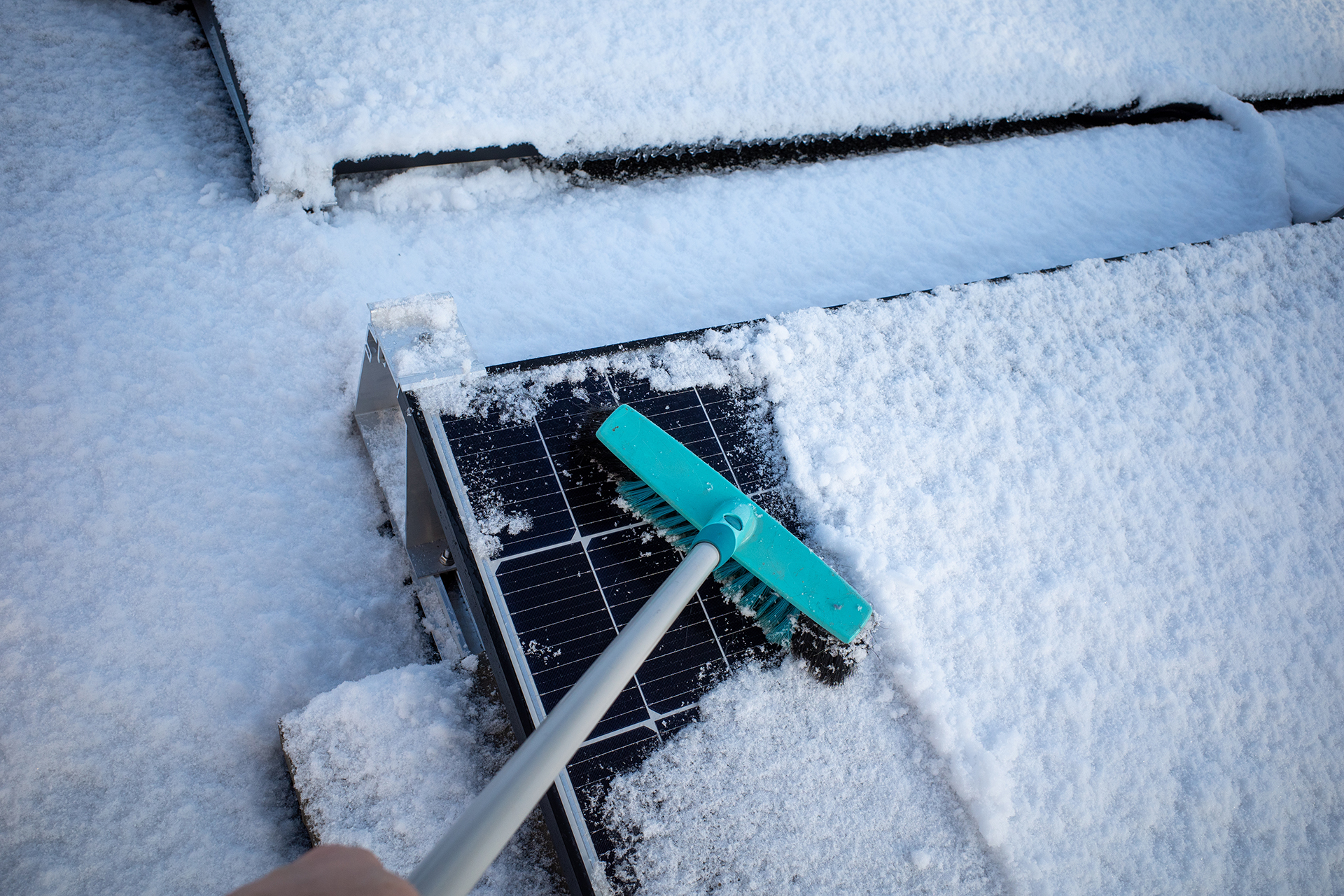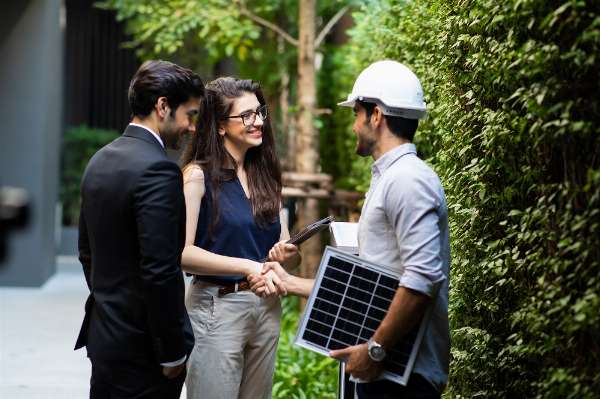It seems like anywhere you look today, solar panels are making their debut on rooftops everywhere. Why are we seeing this influx of solar energy interest and production recently?
Solar energy is increasingly cost-effective, especially in the face of rising traditional energy production costs. Tax incentives for going solar are on the rise in states across the country. Plus, solar energy has become a win-win for consumers and electrical utility companies with the introduction of popular net-metering programs.
If you’re one of the many considering going solar this year, a thousand and one questions may pop into your head: How do I clean solar panels? How do solar panels work at night, in the rain, or when it snows — and how do I clean that snow off of my solar panels after a storm? Can a storm knock out my power if I have solar panels? Can solar flares cause power outages? Well, wonder no longer, because we have all the answers to your burning solar energy questions.
1. Do Power Outages Affect Solar Customers?
The short answer to this question is that it depends on what sort of solar power system you have chosen.
When configuring the solar panel system setup in your home, you have three options: a public grid direct tie-in, an electric grid tie-in with battery backup, or a completely off-grid system. An off-grid system or a battery backup will prevent you from losing power in a storm, even when your neighbors do. Only with the “public grid tie-in only” option will you experience power outages when the community grid shuts down. Let’s look a bit more closely at these options.
Public Grid Tie-In Only: With this setup, your solar panel grid-tie inverter connects directly into the power grid, feeding it with the energy your panels generate. When your community experiences a power outage, the inverter has no way of providing your home with electricity directly since it is entirely dependent on the public grid. There is an upside to this setup, however: If you have a public grid tie-in system, you may be able to take advantage of net metering with your local utility company. Net metering allows you to earn credits on any surplus solar energy your panel system creates.
Public Grid Tie-In With Battery Backup: In this configuration, you have two inverters on hand: a grid-tie inverter and a battery-based inverter. When the public grid experiences an outage, your system will switch to your battery backup system that’s been fed by your solar energy battery-based inverter. Keep in mind, however, because all of the electricity for your home is drawing from a battery and not the public grid, you’ll have a limited amount of stored energy you can use until the grid comes back online.
Complete Off-Grid System: Direct solar energy conversion and battery arrays are the sole sources of energy powering your home in this configuration. Your solar panel battery-based inverter is feeding a bank of batteries that are used to power your home when solar energy is not directly accessible (e.g., evening hours or during poor weather). By going completely off the grid, your home’s energy use is completely independent of the public utility infrastructure, lessening the public’s impact on the environment.
2. How Do Solar Panels Work at Night?
Solar panels work by absorbing photon particles from the sun and converting them into electric power. When there aren’t any photons to absorb from the sun, such as is the case at night, the panels have no energy to convert. Technically the panels will absorb the moonlight, as it is actually sunlight reflecting off the moon. However, the energy captured from direct moonlight is just 0.3 percent of what panels capture during the day — not enough to power your home by any means.

To power your home at night, you must either be tied into the public electrical grid or operate off of solar battery backup. If your system uses a battery backup, your home’s energy needs can be sustained for a limited amount of time from the excess energy your panels absorb during the day. Once your system switches back to direct energy consumption during the day, your solar inverter can get back to work, charging your batteries for the following evening.
3. Do Solar Panels Work in the Rain?
“Can solar panels work in the rain?” is a common question among prospective solar panel owners, particularly if you live in a rain-heavy region. As long as photon energy from the sun can reach the panels, your solar panel system will absorb energy and convert it to electricity. However, the amount of energy converted will be significantly lower than what your panels can absorb and convert during sunny days — about 80 percent less, to be exact.
4. Can Solar Flares Damage Solar Panels?
Solar panel technology is becoming increasingly sophisticated and consumer-friendly. One area of advancement is in its ability to withstand various environmental impacts. Solar flares don’t hurt the solar panels themselves, but the underlying electrical components may take damage, especially if your system is tied to the public electric grid. The best way to protect your system is to use surge protection or purchase inverters that are certified EMP-protected.
5. How Do You Clean Solar Panels?
Solar panels require minimal maintenance, which may include occasional cleaning, depending on your environment. If your home sits in a region with at least moderate rainfall, your panels will receive frequent natural washings. From time to time you may want to wash your panels yourself in order to get rid of any buildup rain that doesn’t wash away. If you have a warranty or lease agreement, however, check the manufacturer's documentation first. If your panels are positioned so that you can safely reach them, then there are a few steps to giving them a wash.
How to Clean Solar Panels
- Turn the panels off before washing.
- Brush the panels with a soft cloth or brush.
- Rinse the panels with water (if using a hose, use a low-pressure setting).
- If there are hard-to-clean spots or buildups, use gentle soap and water to clean the specific areas, then rinse thoroughly with water.
If you aren’t able to reach the panels safely, have a professional clean your panels for you.
6. Does Snow Hurt Solar Panels? What’s the Best Way to Get Snow Off My Solar Panels?
Normal snowfall does not damage solar panels, so there’s no need to remove it if you’re worried about physically protecting your panels. If your concern lies more in energy production, consider the risk and energy savings before venturing out to remove snow from your panels. Since snow falls in winter, clearing it off may be more trouble than it’s worth: Thanks to the angle of the sun and fewer hours of sunlight, your average solar energy production on winter days is much lower than it is on summer days.
You should also keep in mind that each panel is also affected by even the smallest cover or shadow. To achieve efficient solar energy production, your panels need to be completely clear of snow, not just partially brushed off — another reason that clearing snow from solar panels is rarely worth the trouble. Besides, the act of brushing snow off of solar panels can be tedious, physically demanding, and even dangerous.

If you do decide to brush off the snow on solar panels, ensure that you are doing it safely. Use a snow remover that’s safe for solar panels, such as a solar panel-friendly roof rake. If you’re leasing panels through a solar company, check with them before removing snow from your panels. They may have specific stipulations that could damage your warranty or service agreement if not abided by.
If you’re worried about sheets of snow falling off at once as they slide off the solar panels, you can install a solar panel snow guard. These snow guards will slowly release the snow in smaller chunks or keep it on the panel to melt naturally.
7. What Does Solar Panel Maintenance Involve — and Is It Expensive?
Solar panels are designed to last 20 years or longer with minimal maintenance. Recommended inspections of once to twice a year are enough to ensure your panels are functioning well and intact. Most systems induce a monitoring device that will show you the performance of each of your panels and its energy output at any given time. Use this monitoring system on top of annual inspections to ensure your panels are functioning properly. If you’ve purchased or leased your panels through a company, your contract should outline the terms of maintenance and cost.
8. Does Hail Damage Solar Panels?
Yes, hail can damage solar panels, but it’s pretty rare. That’s because manufacturers design and test their panels to resist hail damage, testing them against hail up to one inch in size. It would take quite a storm to top that!
If you do experience hail damage to your panels, most home insurance policies provide replacement coverage.
9. Do Solar Panels Increase Home Value?
Many people want to install solar panels to add value to their home. Solar panels typically increase home value by four percent or more, according to data collected by Zillow. In some states, the effect of solar panels on home value resulted in over a nine percent increase. Each area and the factors associated with home value will vary, though.
10. Should I Lease My Solar Panels?
The decision to buy or lease solar panels is one of the first things you’ll confront when considering residential solar energy production, and your best choice will depend on your priorities. Typically, buying your panels upfront is the better choice since you can benefit from government-sponsored savings for solar panels system owners. However, it can take up to 10 years to see the return on investment after you purchase your panels. If you’re more interested in seeing the monthly savings on utilities upfront, or you don’t have the money for the hefty initial investment, then leasing may be a good choice for you.


